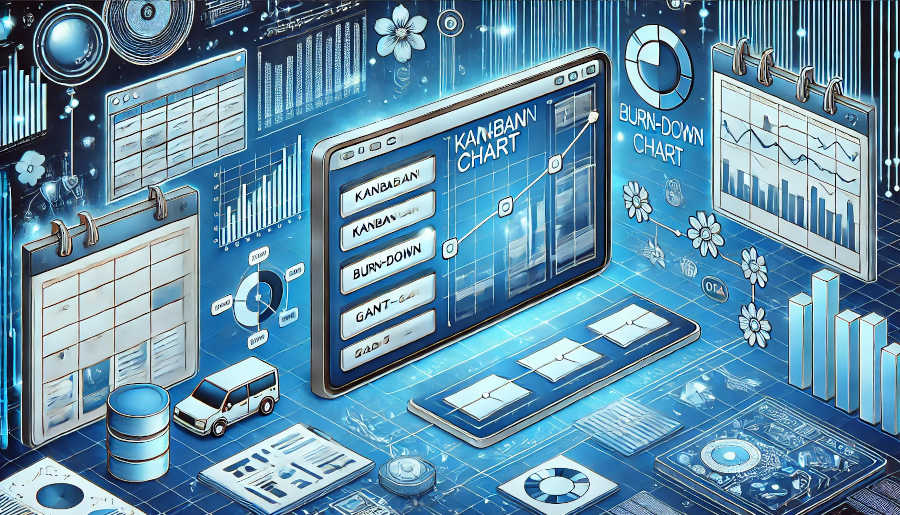A Gantt chart is a visual representation of a project schedule. It provides a clear overview of the tasks involved in a project, their start and end dates, and the dependencies between them. This makes it an invaluable tool for project managers, team members, and stakeholders alike.
At its core, a Gantt chart consists of a horizontal timeline and vertical bars representing each task. The length of each bar corresponds to the duration of the task, and its position on the timeline indicates when the task starts and ends. By looking at a Gantt chart, one can quickly identify the critical path of a project, which is the sequence of tasks that determines the overall project duration.
Understanding the basic components of a Gantt chart is essential before diving into creating one. The tasks are the individual activities that need to be completed as part of the project. Each task should have a clear description and be broken down into manageable chunks. The start and end dates define when the task begins and concludes, and these dates are crucial for planning and tracking progress. Additionally, dependencies between tasks show which tasks must be completed before others can start, ensuring a logical flow of work.
Selecting the Right Gantt Chart Software
There are numerous software options available for creating Gantt charts, each with its own features and capabilities. Choosing the right one depends on several factors, such as the complexity of your project, your budget, and your level of technical expertise.
Some popular Gantt chart software includes Microsoft Project, which is a comprehensive project management tool with advanced features for large-scale projects. It offers a wide range of templates, resource management capabilities, and detailed reporting options. However, it can be relatively expensive and may have a steeper learning curve for beginners.
Another option is Asana, which is a more user-friendly and affordable choice. It has a simple interface that makes it easy to create and manage tasks, and it also integrates well with other popular tools like Google Drive and Slack. Asana is suitable for small to medium-sized projects and teams looking for a straightforward solution.
For those on a tight budget or who prefer a free option, there are also open-source tools like GanttProject. It provides basic Gantt chart functionality and is a great starting point for individuals or small teams just getting into project scheduling. When selecting software, it's important to consider your specific needs and evaluate the features and limitations of each option to find the best fit for your project.
Defining Your Project Tasks
The first step in creating an effective Gantt chart is to clearly define all the tasks involved in your project. This requires a detailed understanding of the project scope and objectives. Start by breaking down the project into major phases or deliverables.

For example, if you're planning a website development project, the major phases might include planning, design, development, testing, and deployment. Once you have identified the major phases, further break them down into individual tasks. Under the design phase, tasks could include creating wireframes, choosing a color scheme, and designing the user interface.
Each task should be specific, measurable, achievable, relevant, and time-bound (SMART). This means that it should have a clear description of what needs to be done, a way to measure its completion, be realistically achievable within the project constraints, be relevant to the overall project goals, and have a defined start and end date. By defining tasks in this way, you can ensure that everyone involved in the project understands what is expected of them and can track progress effectively.
Setting Task Durations and Dependencies
After defining the tasks, the next step is to determine how long each task will take to complete and establish the dependencies between them. Estimating task durations accurately is crucial for creating a realistic project schedule.
To estimate task durations, consider factors such as the complexity of the task, the resources available, and any historical data from similar projects. If you're unsure, it can be helpful to consult with team members who have relevant experience or expertise. For example, if a task involves writing a detailed report, you might estimate the duration based on the length of the report, the research required, and the writing speed of the team member assigned to the task.
Once you have estimated the durations, you need to establish the dependencies between tasks. Dependencies determine the order in which tasks must be completed. There are four main types of dependencies: finish-to-start (FS), start-to-start (SS), finish-to-finish (FF), and start-to-finish (SF). The most common type is finish-to-start, which means that one task must be completed before another can start. For example, the design of a product must be completed before the development can begin. By setting clear dependencies, you can ensure that the project progresses in a logical and efficient manner.
Creating and Customizing Your Gantt Chart
With the tasks, durations, and dependencies defined, it's time to create your Gantt chart using the chosen software. Most Gantt chart software has a user-friendly interface that allows you to easily input the task information and generate the chart.
Start by entering the task names, start dates, end dates, and dependencies into the software. The software will then automatically generate a visual representation of the Gantt chart, showing the tasks as bars on the timeline. You can customize the appearance of the chart to make it more visually appealing and easier to read. This may include changing the colors of the bars, adding labels, and adjusting the scale of the timeline.
Once the basic Gantt chart is created, you can further refine it by adding additional details such as milestones, which are significant events or achievements in the project. Milestones can be represented as diamonds on the Gantt chart and help to mark important points in the project timeline. You can also assign resources to each task, which allows you to track the allocation of resources and ensure that there are no overallocations. By creating and customizing your Gantt chart, you can effectively communicate the project schedule to all stakeholders and keep everyone on the same page.
In conclusion, creating a Gantt chart is a valuable skill for anyone involved in project management. By following these five simple steps - understanding the basics, selecting the right software, defining tasks, setting durations and dependencies, and creating and customizing the chart - you can quickly get started with Gantt chart drawing. A well-constructed Gantt chart provides a clear roadmap for your project, helps you identify potential issues and bottlenecks, and enables you to effectively manage resources and track progress. Whether you're working on a small personal project or a large-scale business initiative, a Gantt chart can be a powerful tool to ensure the success of your project. It allows you to communicate the project plan clearly to your team members and stakeholders, facilitating better collaboration and coordination. With practice, you'll become more proficient in creating detailed and accurate Gantt charts that will serve as a cornerstone for successful project execution. So, don't hesitate to start exploring Gantt chart creation and experience the benefits it can bring to your projects.
ARTICLE TITLE :Gantt chart drawing introduction: 5 simple steps to get started quickly ,AUTHOR :ITpmlib

















